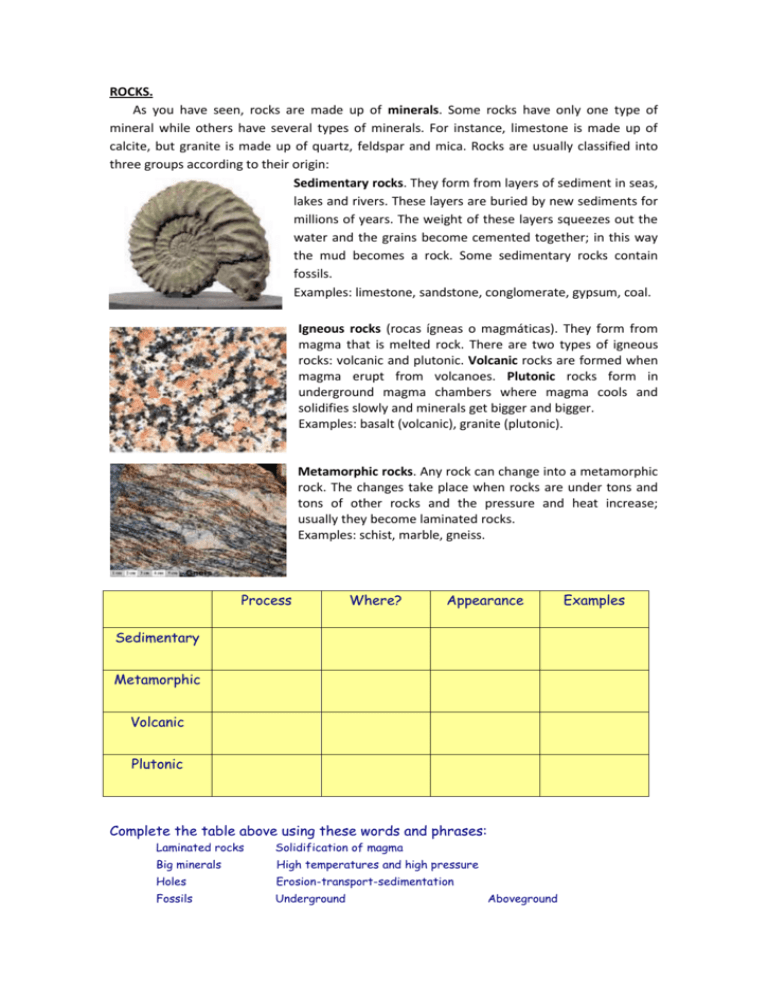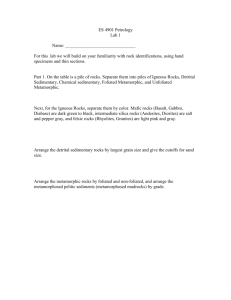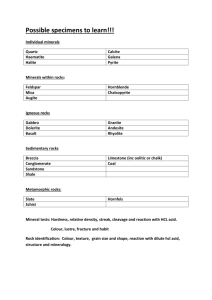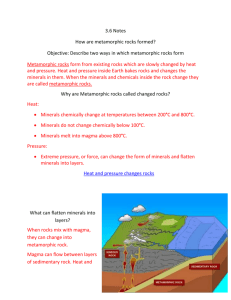ROCKS. As you have seen, rocks are made up of minerals. Some
advertisement

ROCKS. As you have seen, rocks are made up of minerals. Some rocks have only one type of mineral while others have several types of minerals. For instance, limestone is made up of calcite, but granite is made up of quartz, feldspar and mica. Rocks are usually classified into three groups according to their origin: Sedimentary rocks. They form from layers of sediment in seas, lakes and rivers. These layers are buried by new sediments for millions of years. The weight of these layers squeezes out the water and the grains become cemented together; in this way the mud becomes a rock. Some sedimentary rocks contain fossils. Examples: limestone, sandstone, conglomerate, gypsum, coal. Igneous rocks (rocas ígneas o magmáticas). They form from magma that is melted rock. There are two types of igneous rocks: volcanic and plutonic. Volcanic rocks are formed when magma erupt from volcanoes. Plutonic rocks form in underground magma chambers where magma cools and solidifies slowly and minerals get bigger and bigger. Examples: basalt (volcanic), granite (plutonic). Metamorphic rocks. Any rock can change into a metamorphic rock. The changes take place when rocks are under tons and tons of other rocks and the pressure and heat increase; usually they become laminated rocks. Examples: schist, marble, gneiss. Process Where? Appearance Sedimentary Metamorphic Volcanic Plutonic Complete the table above using these words and phrases: Laminated rocks Solidification of magma Big minerals High temperatures and high pressure Holes Erosion-transport-sedimentation Fossils Underground Aboveground Examples Types of Process Where? Appearance Examples rocks Sedimentary Metamorphic Volcanic Plutonic Complete the table above using these words and phrases: Laminated rocks Gypsum Big minerals Aboveground Conglomerate Schist Types of Granite Coal High temperatures and high pressure Solidification of magma Basalt Holes Erosion-transport-sedimentation Sandstone Fossils Process Where? Underground Limestone Marble Appearance Examples rocks Sedimentary Metamorphic Volcanic Plutonic Complete the table above using these words and phrases: Laminated rocks Gypsum Big minerals Aboveground Conglomerate Schist Granite Coal High temperatures and high pressure Solidification of magma Basalt Holes Erosion-transport-sedimentation Sandstone Fossils Underground Limestone Marble







